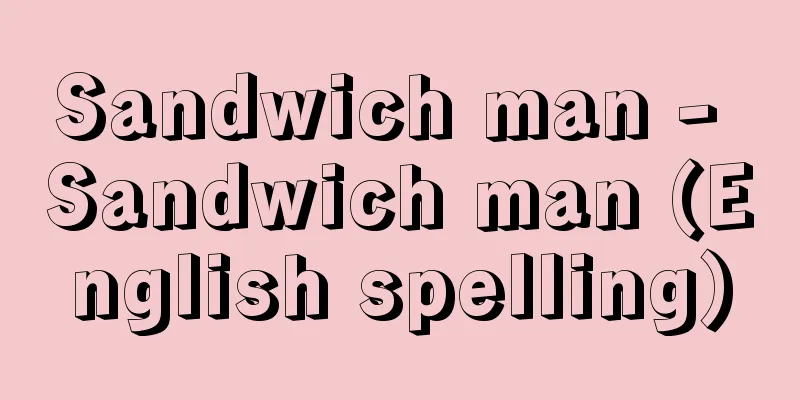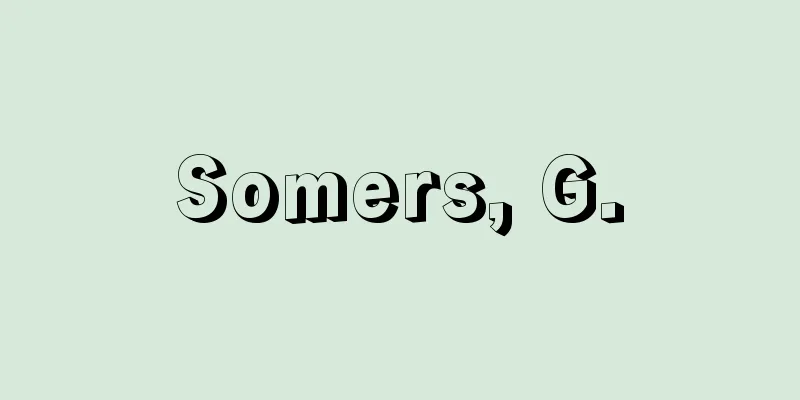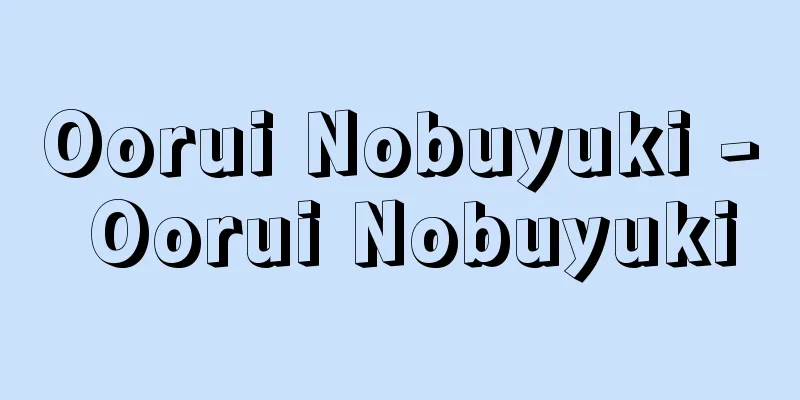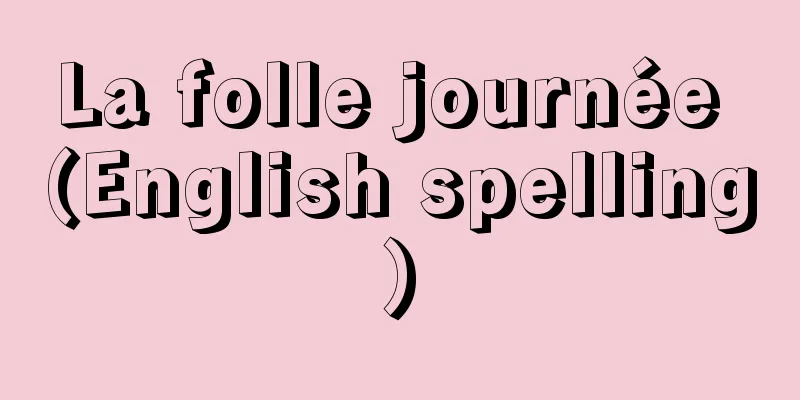Yamakagashi - Yamakagashi
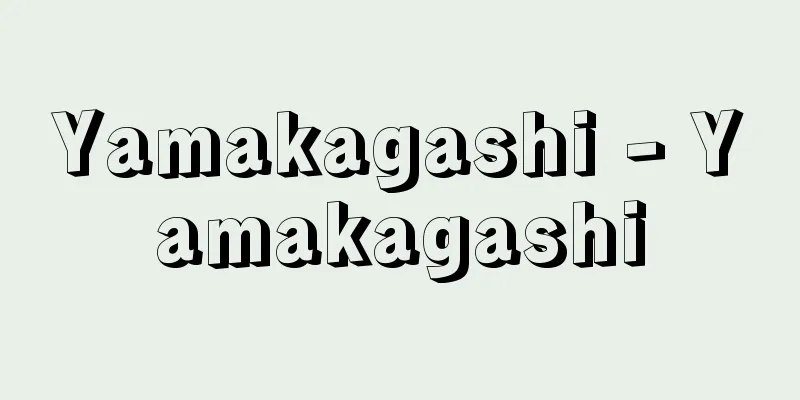
|
A snake of the order Squamata, family Colubridae. It is classified as a non-venomous snake, and is the most densely populated snake in Japan, and is commonly seen in various places, but as described below, it is a unique species with several characteristics. It is distributed in Honshu, Shikoku, Kyushu, and the Osumi Islands, and closely related species are distributed in the Korean Peninsula and China. Its total length is 60 to 100 centimeters, with the largest male reaching about 1.2 meters and the largest female reaching about 1.5 meters. The front half of the body is reddish, but there are many variations in body color and markings, and young individuals have a noticeable yellow band on their neck. Unlike ordinary non-venomous snakes, it has one or two larger teeth at the back of its upper jaw, spaced slightly from the front row of teeth, and a Duvernoy's gland, a type of ear gland, opens at its base. The secretion fluid from the glands contains hemorrhagic substances, and in rare cases, when the Yamakagashi mistakes a human finger for food and bites it deeply with its molars, subcutaneous bleeding or symptoms similar to those of a venomous snake bite may occur depending on the individual's constitution and the amount of venom. Therefore, care must be taken when handling this species directly. In addition, there are a dozen or so pairs of circular tissue neck glands lined up in the dermis of the neck, and when pressed hard, the tissue breaks and the fluid spurts out. If the fluid from these neck glands comes into contact with the eyes or oral mucosa of a natural enemy, it causes inflammation. If it gets into the human eye, it causes keratitis, and in experiments, it has killed other non-venomous snakes. The neck glands seem to be effective as a means of self-defense, and when this species encounters an enemy, it displays a unique defensive posture in which it lowers its head and sticks out its neck. In addition, older individuals may inflate their necks and stand up, and many individuals may twist their bodies to pretend to die. They usually mate in the fall and lay 8 to 20 eggs in early summer the following year. Their diet consists of frogs, including toads which other snakes dislike, and small birds. [Takahiro Matsui] ©Shogakukan "> Clinical signs of snakebite Source: Shogakukan Encyclopedia Nipponica About Encyclopedia Nipponica Information | Legend |
|
爬虫(はちゅう)綱有鱗(ゆうりん)目ナミヘビ科のヘビ。分類上は無毒ヘビで、日本ではもっとも生息密度が高く、各地で普通にみられるが、後述のとおりいくつかの特徴を備えた独特な種である。本州、四国、九州、大隅諸島(おおすみしょとう)に分布し、近縁種が朝鮮半島、中国などに分布する。全長60~100センチメートル、雄の最大は約1.2メートル、雌では1.5メートルほどに達する。体の前半部は赤色を帯びるが、体色・斑紋(はんもん)には変異が多く、若い個体では頸部(けいぶ)の黄帯が目だつ。普通の無毒ヘビと異なり、上顎(じょうがく)後方には、前方の歯列とすこし間隔を置いて1、2本の他より大きい歯があり、基部に耳腺(じせん)の一種であるデュベルノイ腺が開いている。腺の分泌液には出血性成分が含まれており、ヤマカガシが餌(えさ)と間違えて人間の指を奥歯で深くかんだ場合など、体質や毒量によっては皮下出血や毒ヘビの咬症(こうしょう)に似た症状がおこるケースがまれにある。したがって、本種を直接取り扱う場合には、注意を要する。また頸部の真皮内には、円形組織の頸腺が十数対並んでおり、強く圧すると組織が破れて液が噴出する。この頸腺の液が天敵の目や口腔(こうこう)粘膜に付着すると炎症をおこさせる。人間の目に入れば角膜炎をおこさせ、実験的にはほかの無毒ヘビを斃死(へいし)させる。頸腺は自衛手段として有効なようで、本種は敵に出会うと、頭を下げ頸部を突き出すという特有の防衛姿勢をみせる。また老熟個体では、頸部を膨らませて立ち上がることがあり、多くの個体は体をひねり擬死をみせることがある。秋に交尾することが多く、翌年の初夏に8~20個を産卵する。餌は、ほかのヘビが嫌うヒキガエルを含むカエル、小鳥などである。 [松井孝爾] ©Shogakukan"> ヘビ咬症の臨床症状 出典 小学館 日本大百科全書(ニッポニカ)日本大百科全書(ニッポニカ)について 情報 | 凡例 |
>>: Returning from the mountain
Recommend
OTF - OTF
" Optical transfer function " represents...
Kiyosu Castle
Hirajiro Castle was located in Kiyosu City, Aichi ...
Capitant, René
Born: August 19, 1901, Latronche, Isère [Died] May...
Spectral type
A classification of stars according to the appear...
positive after image
…This refers to the visual effect that occurs whe...
Lord of the fort - Ushiyu
…As for the latter, after the time of Wang Mang, ...
Permanent income
…After World War II, the so-called consumption fu...
Geometric mean
For n positive numbers a 1 , a 2 ,……, a n , the n...
São Paulo (State)
Located in southeastern Brazil, it is the state th...
Cantharidae
…They overwinter as larvae and pupate in April of...
Takayama Ukon
A military commander and Christian feudal lord du...
Yoshinaga Ouchi
1540-1557 A military commander in the Sengoku per...
Hirotsuna Asonuma
...Currently, rice, livestock, tobacco, and hops ...
Electrophorus electricus
...In the wild, they hide in the mud on the ocean...
Thorarensen, B.
...It is part of the lineage of medieval European...
